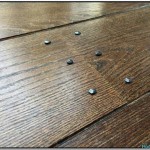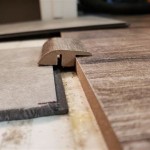Laminate flooring is a popular choice for many homeowners who are looking to give their home a modern and elegant look. But before you go ahead and install your new laminate floor, you may be wondering if you need to use an underlayment first. The answer is yes, you should use an underlayment with your laminate flooring.
What is Underlayment?
Underlayment is a thin layer of material that is placed between the subfloor and the laminate flooring. It acts as a cushion for the laminate floor, which helps absorb any shock or impact and reduces the amount of noise that can travel through the floor. It also helps to provide a smooth and even surface for the laminate flooring, which can make installation easier.
Benefits of Using Underlayment
Using an underlayment with your laminate flooring has many benefits, including:
- Reduced Noise: Underlayment will help to reduce noise levels, making your home quieter.
- Improved Insulation: Underlayment can help to insulate your floor, keeping it warmer in the winter and cooler in the summer.
- More Durable: The underlayment can help make your flooring more durable and last longer.
- Better Installation: An underlayment can help create a smooth and even surface for your laminate flooring, making installation easier and faster.
Types of Underlayment
There are many different types of underlayment available, including foam, felt, cork, and rubber. Each type has its own advantages and disadvantages, so it’s important to do your research to find the best option for your needs. Foam underlayment is usually the most affordable and is a good choice for most laminate floors. Felt and cork underlayment are more expensive but offer more soundproofing and insulation. Rubber underlayment is the most expensive but is the most durable and provides the most soundproofing.
Installation Tips
When installing your underlayment, make sure to follow the manufacturer’s instructions. Start by laying out the underlayment in the same direction as the laminate flooring, making sure to overlap the edges by at least one inch. Secure the underlayment to the subfloor using staples, nails, or adhesive. Make sure to check the surface for any uneven spots or gaps, and then lay the laminate flooring on top of the underlayment.
Conclusion
Using an underlayment with your laminate flooring can help to reduce noise levels, improve insulation, and make the floor more durable. There are many different types of underlayment available, so it’s important to do your research to find the best option for your needs. When installing the underlayment, make sure to follow the manufacturer’s instructions and check the surface for any uneven spots or gaps.




:max_bytes(150000):strip_icc()/laminate-flooring-underlayment-1314969-01-18b4a9e3616d4a298e8acd28839ab0f3.jpg)




:max_bytes(150000):strip_icc()/underlayment-for-laminate-flooring-1822245_01-cad66fe5f1ab47b28c30a7d9ccfb702c.jpg)




Related Posts








